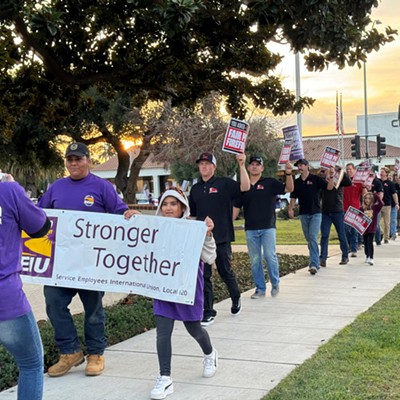• Gov. Gavin Newsom signed SB 129, the state budget agreement dubbed the California Comeback Plan, on July 12. “The California Comeback Plan focuses on providing relief to those that need it most and major investments to address the state’s most persistent challenges,” a July 12 statement from Newsom’s office said. “The plan provides immediate cash relief to middle-class families and businesses hit hardest by the pandemic, creating the biggest state tax rebate in American history and the largest small-business relief package in the nation.” According to the governor’s office, two out of every three Californians will qualify to get $600 stimulus checks from the plan, for a total payout of $12 billion. Qualified families with children will receive an additional $500. The legislation also includes a renter assistance package. “The plan provides a total of $5.2 billion to help low-income renters and landlords, covering 100 percent of back-rent and all prospective rent for several months into the future,” the statement said, as well as $2 billion for past-due utilities. The stimulus package additionally creates direct small business grants and the California Competes Tax Credit grant program to incentivize businesses to come to California.
• California added more than 70,000 jobs last month, according to a July 16 statement from Gov. Gavin Newsom. “Before the pandemic, a 98,500-job increase was California’s largest job gain on record; since February, we’ve averaged 111,740 new jobs per month,” Newsom said in the statement. “These are promising figures that represent paychecks for Californians, but we still have a long way to go and refuse to take anything for granted—the $100 billion California Comeback Plan makes investments right back into Californians, the biggest economic stimulus program in state history to bring us roaring back.” The state’s unemployment rate stayed steady from May to June at 7.7 percent, according to the Employment Development Department. Santa Barbara County’s June rate was lower than the state average at 5.9 percent, though it increased from May’s rate of 5.4 percent. Pre-pandemic unemployment rates in the county hovered around 3 to 4 percent, indicating that the local economy still has some ground to make up. But compared with a year ago, most local industries are doing significantly better. Professional and business services in Santa Barbara County have 6,300 more employees compared to a year ago, and leisure and hospitality had 3,100 more workers last month than in June 2020.
• State Sen. Monique Limón (D-Santa Barbara) recently commended the United Way of Santa Barbara County for its rental assistance program, which has given out more than $14 million to local residents. “Thank you to United Way of Santa Barbara County for continuing to support our communities with rental assistance and covering other pandemic-related financial losses,” Limón said in a Facebook post. She added that AB 832, which Limón voted in favor of and was approved by the governor in late June, “will allocate more funding to help tenants and landlords.” The United Way is no longer accepting applications for its rental assistance program due to a high volume of applicants, according to the organization’s website, but other COVID-19 relief resources are available at unitedwaysb.org/covid19. To learn more about state rental resources and assistance, visit housing.ca.gov.









